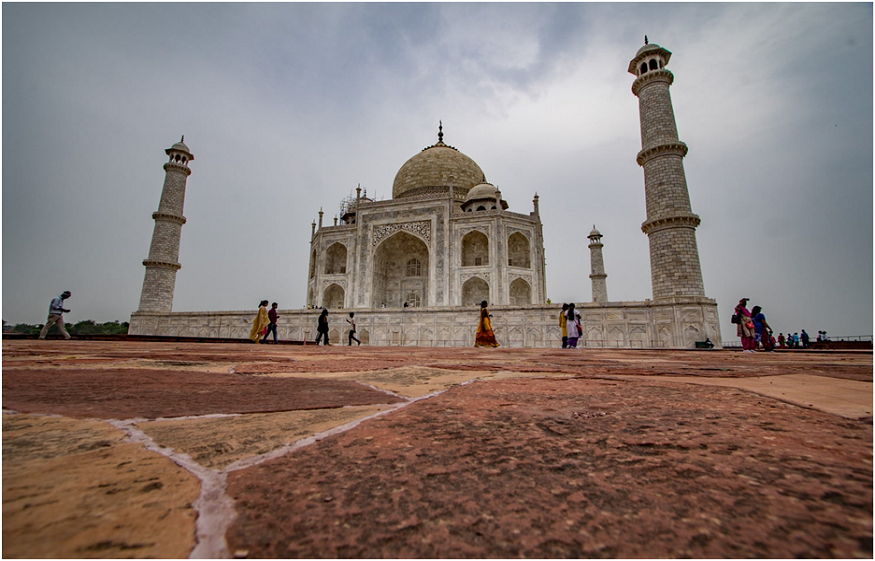
Know More About the History of Taj Mahal
On the same day agra tour by train, you will discover the beauty of Taj Mahal, is a mausoleum complex in Agra in the western Indian state of Uttar Pradesh. After his beloved wife Mumtaz Mahal (“Chosen One of the Palace”) passed away during childbirth in 1631, Mughal Emperor Shah Jahn (reined 1628-58) commissioned the construction of the Taj Mahal to honor her memory. Located on the southern (right) bank of the Yamuna (Jumna) River in the city’s eastern sector, it is India’s most recognizable and well-known landmark.
The Taj Mahal, a synthesis of Indian, Persian, and Islamic traditions, stands out as the best example of Mughal architecture due to its balanced proportions and seamless inclusion of decorative elements. Beautiful gardens, a museum, and two mosques (located symmetrically on either side of the mausoleum). In 1983, UNESCO recognized the complex as a World Heritage site.
Everything in the complex is designed around this central concept, typical of Mughal funerary architecture. The design is informed by various secondary ideas, the most prominent of which is a hierarchy. The structure’s acoustics, surface decoration, materials, and geometry all work together on purpose.
Constructional background
Several historical architects have been credited for the complex’s design, but most scholars agree that the principal architect was an Indian of Persian heritage, Ustad AmadLahawr. Construction of the main tomb was completed by 1638–1639 with the help of around 20,000 workers from India, Persia, the Ottoman Empire, and Europe; auxiliary structures were completed by 1643, and ornamentation lasted until at least 1647.
According to legend, Shah Jahan planned to bury his remains in a tomb on the other side of the river. Black marble was scheduled for construction, and a bridge was supposed to link it to the Taj Mahal. However, his son Aurangzeb deposed him in 1658, and he spent the remainder of his life imprisoned in Agra Fort.
Structure and design
The mausoleum is white marble that reflects different colours depending on the sunlight or moonlight that hits it. Each of its four virtually identical facades features a broad central arch with a peak height of 108 feet (33 meters) and chamfered (slanted) corners incorporating smaller angles.
The central dome is the tallest at 240 feet (73 meters), and four smaller crowns encircle it. A single flute note reverberates five times because of the dome’s excellent acoustics. An octagonal marble chamber decorated with low-relief carvings and semiprecious stones (pietra dura) serves as the focal point of the mausoleums interior.
On the same day taj mahal tour by train, you can find the tombs of Mumtaz Mahal and Shah Jahan inside. A delicately carved marble filigree curtain encloses the fake tombs. The accurate sarcophagi are buried beneath the graves at the garden level. The four corners of the square plinth include exquisite minarets that stand out from the main structure.
The mosque, which faces east, and its jaw, which faces west, is symmetrically placed on either side of the mausoleum, near the northwest and northeastern corners of the garden, respectively. They provide a striking visual and textural contrast to the mausoleum’s white marble, built of red Sikri sandstone with marble-necked domes and architraves.





